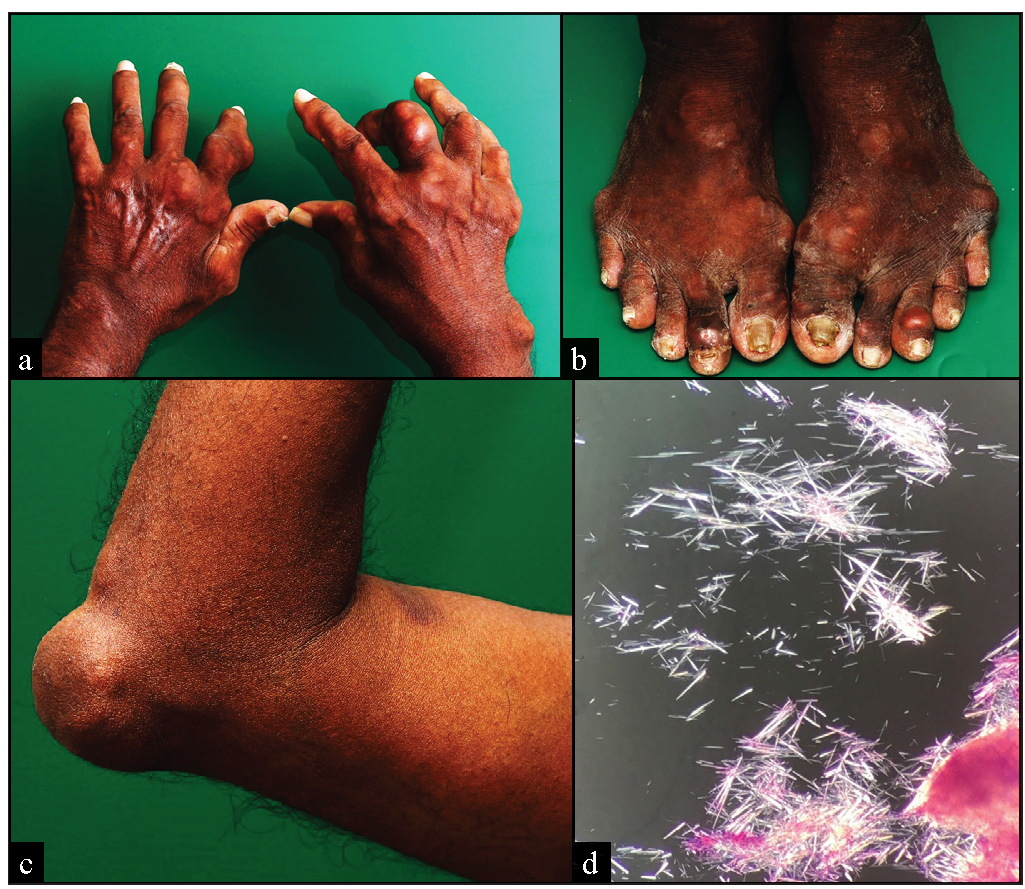A man in his 40s presented with multiple nodules around joints along with episodes of painful joint swelling for one year. Cutaneous examination revealed multiple yellowish-white, non-tender, mobile, firm to hard subcutaneous nodules on hands [Figure 1a], feet [Figure 1b], elbows [Figure 1c], and knees with joint deformity.

Export to PPT
His serum uric acid (13.1 mg/dl) and serum creatinine (1.8 mg/dl) was found to be raised and polarised microscopy from subcutaneous nodules revealed negative birefringent crystals [Figure 1d], leading to the diagnosis of tophaceous gout. He was started on renal adjusted dose of allopurinol (50 mg once daily). However, the response to treatment couldn’t be evaluated, as one month later, the patient succumbed due to sepsis-associated chronic kidney disease.
Extensive tophaceous gout is an uncommon entity and needs to be differentiated from calcinosis cutis, rheumatoid nodules, multicentric reticulohisticytosis, and tuberotendinous xanthomas.
留言 (0)